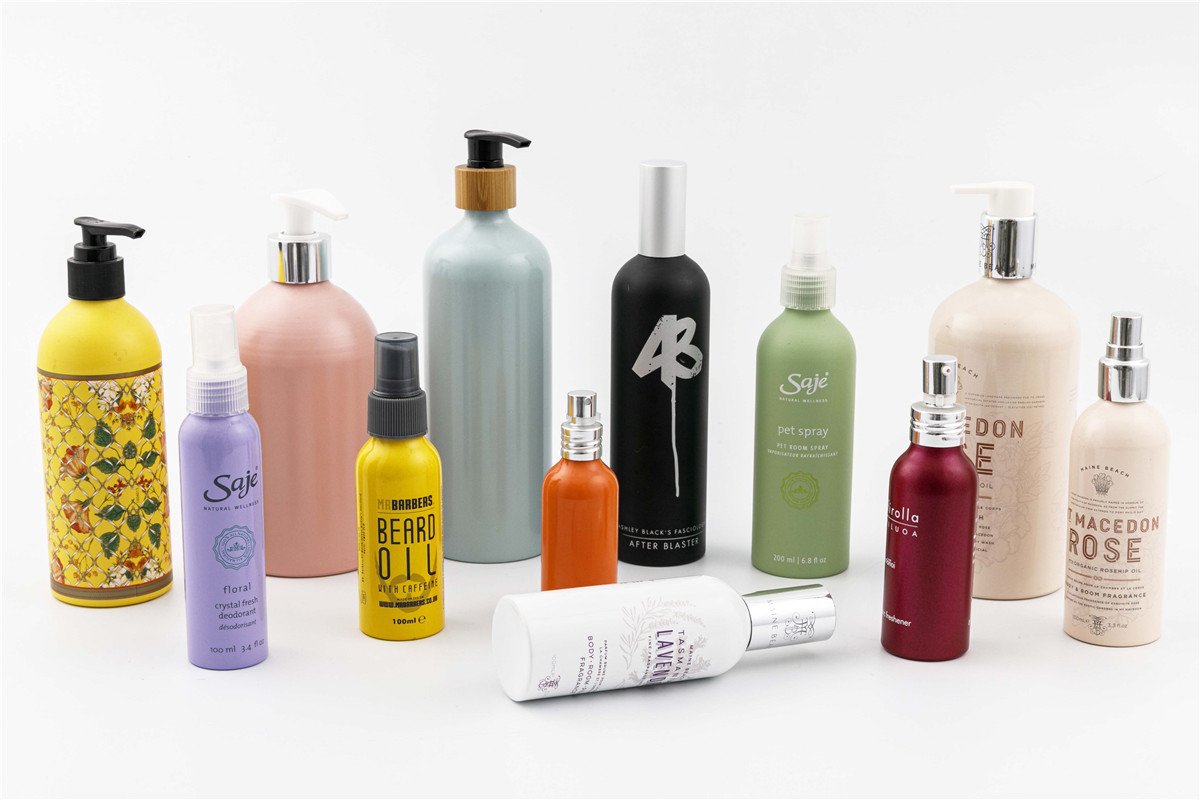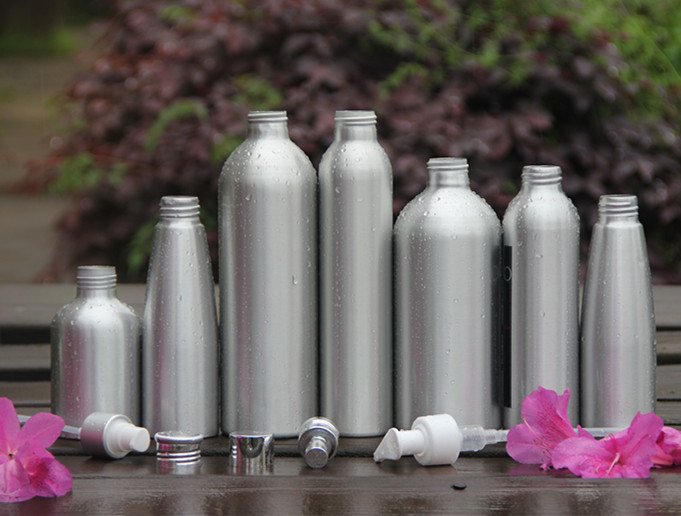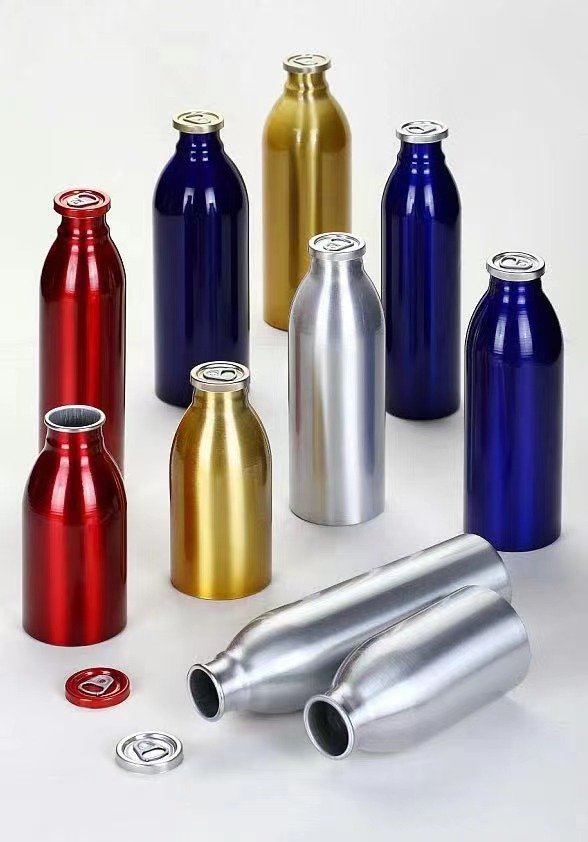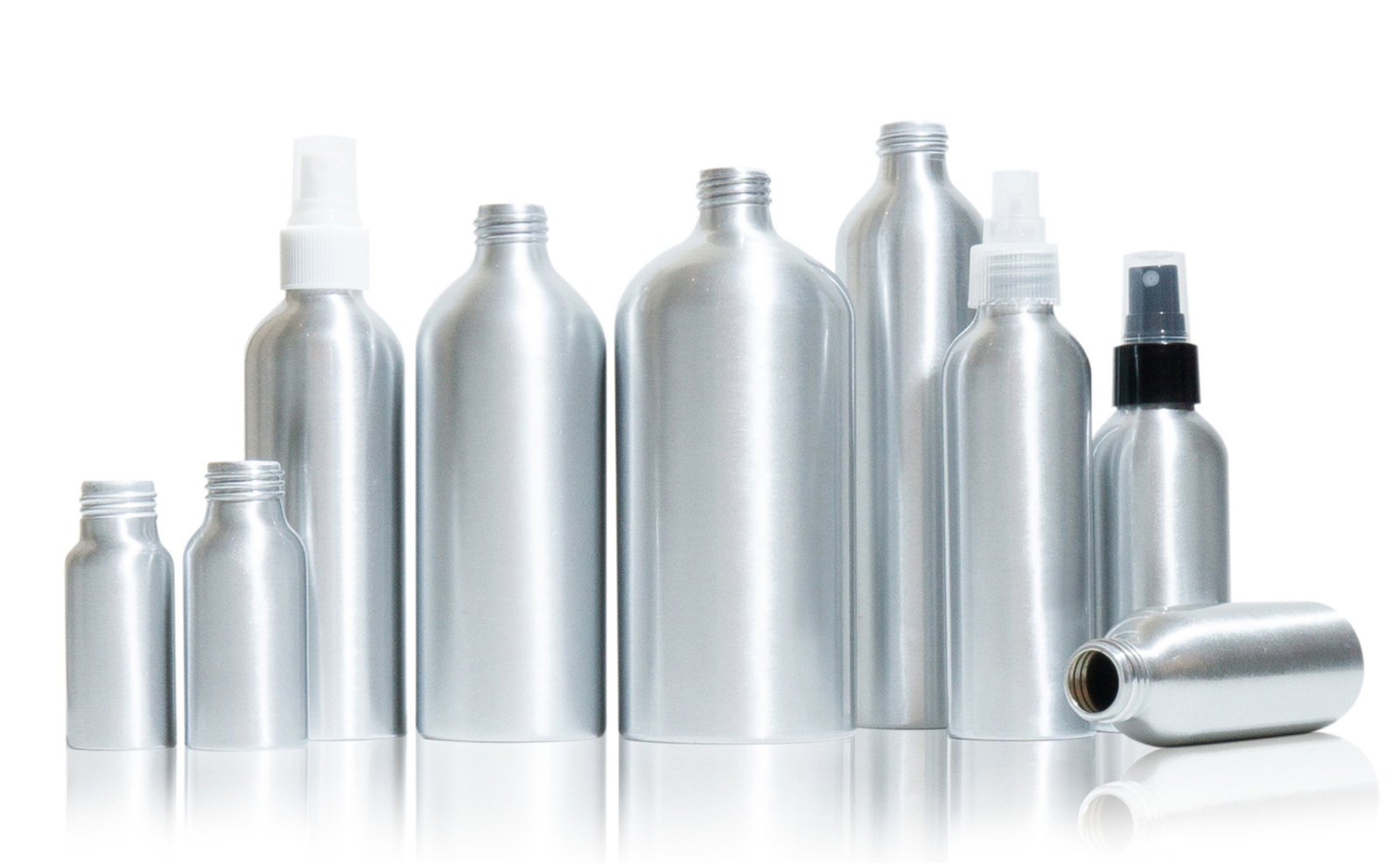With the successive implementation of plastic bans by various countries around the world, the packaging materials of many brands have changed, gradually transitioning from traditional plastic packaging to aluminum packaging. This has been a major trend in recent years because, as we all know, aluminum is a recyclable and environmentally friendly material. Using aluminum packaging instead of plastic can greatly reduce plastic pollution and has significant implications for environmental protection.
However, a question arises: many brands, being unfamiliar with the aluminum packaging industry as they adopt it for the first time, have a great concern about how to identify the quality of packaging products. We, as industry professionals with over 10 years of experience in this field, are here today to teach you how to identify the quality of aluminum bottles.

Firstly, let’s understand the four important processes of aluminum bottles: 1. Polishing 2. Interior Coating 3. Exterior Coating 4. Printing. Now, we will guide you through each of these four processes to help you judge the quality:
- 1. Polishing
Polishing is a very important part of the production process of aluminum bottles, as its quality directly affects the effect of subsequent painting and printing. It is divided into fine polishing and rough polishing. Fine polishing refers to an additional polishing process on the basis of rough polishing, making the surface of the bottle smoother and more uniform. Often, many factories may skip the fine polishing to save labor and time, which is one of the places where quality differences arise. The image below illustrates the comparison between fine polishing and rough polishing for your reference.

- 2. Interior Coating
Due to its metallic properties, aluminum bottles are prone to chemical reactions when in contact with contents if not internally coated. Therefore, it is essential for aluminum bottles to have an internal coating layer for isolation and protection. There are two types of commonly used threaded aluminum bottles: those produced by fully automatic production equipment and those produced by semi-automatic production equipment. The internal coating of these two types may differ slightly. For bottles produced by fully automatic production equipment, the internal coating uniformity tends to be better and thus safer. Bottles produced by semi-automatic lines may have minor flaws due to manual operation. However, it does not mean that bottles produced by semi-automatic lines have poor quality; it just means there is a small probability of issues. Nonetheless, for some well-established aluminum bottle manufacturers like us, such problems are rare because we prioritize this process and employ experienced workers. Since these flaws are not easily noticeable to the naked eye, we highly recommend customers to test sample bottles before purchasing to ensure safety.

- 3. Exterior Coating
Exterior coating, also known as outer painting, includes base coating and surface painting. For instance, before printing on bottles, a base coat is applied, which typically determines the main color scheme of the bottle. The main potential issue here is uniformity. Uneven application, with some areas thicker than others, may lead to a phenomenon called “aluminum transparency.” Hence, we pay close attention to this aspect during our production process, as it significantly influences overall quality. Additionally, regarding the matte finish, some factories’ bottles may easily produce metallic scratches. While these can usually be wiped off, in some cases, they may not, which is unfavorable for a brand’s image. Our matte aluminum bottles do not have such issues because we apply an additional matte oil layer after printing. However, some manufacturers may skip this step to reduce costs, resulting in lower quality compared to ours.

- 4. Printing
Printing is a common process in aluminum bottle production, with many brands imprinting their logos on the bottles. There are mainly three printing methods for aluminum bottles: offset printing, silk-screen printing, and heat transfer printing. Of course, there are other methods like water transfer printing, but they are less common. Offset printing is mainly used for fully automatic line aluminum bottles, suitable for printing logos with 6 colors or more. The printing effect is excellent and less prone to quality issues. Silk-screen and heat transfer printing are mainly used for semi-automatic line aluminum bottles. Silk-screen is suitable for simple logo designs with single colors or up to 3 colors, as printing is done one color at a time and may result in inconsistent positioning with more colors. Heat transfer printing, on the other hand, is suitable for relatively complex logo designs with more than 3 colors, offering better adhesion and printing quality. It is more popular for its superior printing effect, although the cost is relatively higher. The choice between these methods depends on the brand’s positioning and market conditions.

The above are the four processes to consider when selecting aluminum bottle packaging and how to judge their quality. We hope this information is helpful to you. Of course, these four processes do not cover all the processes involved in aluminum bottle production; there are others.
If you have any requirements for aluminum bottles or any questions during the purchasing process, please feel free to contact us. We are here to provide professional assistance and support.






